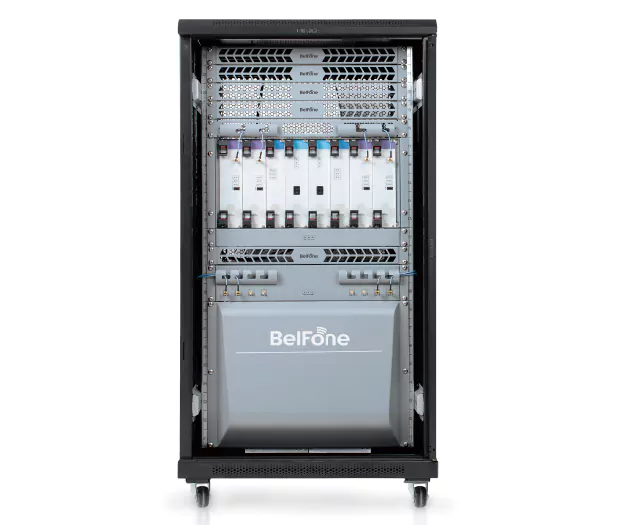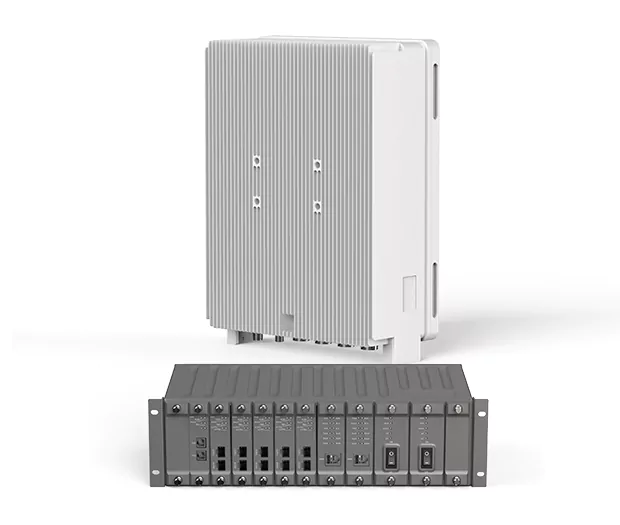 Home
>
News
>
Blog
>
How does the wireless communication system ensure communication security in blind spots and dead zones?
Home
>
News
>
Blog
>
How does the wireless communication system ensure communication security in blind spots and dead zones?How does the wireless communication system ensure communication security in blind spots and dead zones?
release date:2025-08-22
From underground mines dozens of meters deep to tower cranes hundreds of meters high, from crowded exhibition sites to desolate field exploration areas, the BelFone is providing reliable communication support in various fields with almost uninterrupted coverage. This coverage is not merely the simple addition of signal ranges, but rather the precise penetration of complex environments through technical adaptation and in-depth scene exploration, offering underlying communication support for efficient collaboration and safety assurance.
In urban traffic scenarios, the wireless intercom coverage of the subway system runs through underground tunnels, platforms and ground control centers. Even when trains speed through light and dark sections, the communication between drivers and dispatchers will not experience any lag. In industrial plants, from the noisy mechanical environment of production workshops to the densely packed metal shelves in storage areas, the system ensures real-time communication for equipment inspection and production scheduling through anti-interference design. Large-scale event sites are the "touchstone" of coverage capabilities. In the backstage of a 10,000-person concert, dozens of working groups can communicate simultaneously through group channels, and dynamic channel allocation technology avoids signal congestion. In field rescue operations, portable base stations can set up a temporary communication network within 20 minutes, allowing rescue teams in areas without public networks such as deep mountains and canyons to stay in contact. The stable operation in these scenarios verifies the system's adaptability to different environments.
Full coverage across all areas first brings about cost optimization. A single system can meet the communication needs of multiple regions, avoiding redundant construction. A certain chemical industrial park, through unified wireless intercom coverage, has reduced its operation and maintenance costs by 40% compared to the previous multiple communication devices. In terms of safety, the continuity of coverage ensures that emergency instructions are transmitted. For instance, during a high-rise building fire, firefighters can still receive command instructions in areas such as elevator shafts and stairwells, buying crucial time for rescue operations. The improvement in efficiency is even more evident. After achieving full coverage in a logistics park, the collaborative response speed of forklift drivers, warehouse managers, and delivery personnel has increased by 50%, and the goods turnover cycle has been shortened by 15%. In mining operations, real-time communication between underground and surface levels makes adjustment of mining plans more flexible and increases equipment utilization by 20%. This upgrade from "being able to communicate" to "communicating well" is precisely the core value of converting coverage capabilities.
I. Technical Foundation: Multiple Solutions to Overcome Coverage Challenges
II. Scene Implementation: Practical Verification Covering All Fields
In urban traffic scenarios, the wireless intercom coverage of the subway system runs through underground tunnels, platforms and ground control centers. Even when trains speed through light and dark sections, the communication between drivers and dispatchers will not experience any lag. In industrial plants, from the noisy mechanical environment of production workshops to the densely packed metal shelves in storage areas, the system ensures real-time communication for equipment inspection and production scheduling through anti-interference design. Large-scale event sites are the "touchstone" of coverage capabilities. In the backstage of a 10,000-person concert, dozens of working groups can communicate simultaneously through group channels, and dynamic channel allocation technology avoids signal congestion. In field rescue operations, portable base stations can set up a temporary communication network within 20 minutes, allowing rescue teams in areas without public networks such as deep mountains and canyons to stay in contact. The stable operation in these scenarios verifies the system's adaptability to different environments.
III. Value Transformation: From Coverage Capacity to Actual Efficiency
Full coverage across all areas first brings about cost optimization. A single system can meet the communication needs of multiple regions, avoiding redundant construction. A certain chemical industrial park, through unified wireless intercom coverage, has reduced its operation and maintenance costs by 40% compared to the previous multiple communication devices. In terms of safety, the continuity of coverage ensures that emergency instructions are transmitted. For instance, during a high-rise building fire, firefighters can still receive command instructions in areas such as elevator shafts and stairwells, buying crucial time for rescue operations. The improvement in efficiency is even more evident. After achieving full coverage in a logistics park, the collaborative response speed of forklift drivers, warehouse managers, and delivery personnel has increased by 50%, and the goods turnover cycle has been shortened by 15%. In mining operations, real-time communication between underground and surface levels makes adjustment of mining plans more flexible and increases equipment utilization by 20%. This upgrade from "being able to communicate" to "communicating well" is precisely the core value of converting coverage capabilities.
Technical support: Longcai Technology

















